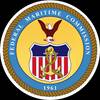
Safety issues uppermost in regulatory thinking dominate second quarter training package releases from Seagull Maritime, with the E-learning specialist focusing on frontline hazards faced by modern seafarers.
New computer-based training (CBT) modules to join the Seagull Maritime portfolio include two courses focusing on enclosed spaces - one of the most hazardous areas for shipboard work.
Gas measurement, a safe atmosphere (CBT0425) is the first of two modules concerning gas measurement in enclosed spaces and cargo tanks and is aimed primarily at operational level crew. CBT0425 covers evaluating the atmosphere in an enclosed space, itemizing possible contaminant gases, assessing explosion and fire risks, and confirming that the enclosed space is fit for entry. It also details terms related to exposure limits for airborne toxic substances and sets out the principles of the inerting and gas-freeing of enclosed spaces.
The complementary module Gas measurement, measuring instruments (CBT 0426) also covers gas measurement in enclosed spaces and cargo tanks, but focuses on the use and maintenance of the portable instruments that check atmospheres. Again, the course is primarily aimed at operational level staff, but could also be a useful refresher for management.
Bent Christoffersen, Seagull Maritime Director Training Content, says: “Entry into enclosed spaces is a high priority safety issue and the right training is crucial. These modules update an earlier Seagull CBT, reflecting new SOLAS rules that came into effect in 2015, while we have also taken the opportunity to enhance user-friendliness. Without being alarmist, these type of training modules can save lives.”
Other new CBT modules from Seagull Maritime also address safety-critical operations. The new module Use of Liferafts (CBT 0298) reinforces the knowledge gained by support level crew that have attended an STCW personal survival course, for example. After completing the module the learner will be able to launch, embark and prepare a life raft for survival should a vessel need to be abandoned at sea.
Meanwhile, Bulk carriers unloading (CBT 0349) focuses on safe unloading of bulk carrier procedures, augmenting Seagull Maritime’s continuing training development initiative targeting the sector. Seagull Maritime released six new bulker titles were released in 2014, and CBT 0349 is the first of four covering bulk carrier crew and management planned for release this year.
Seagull Maritime is also developing CBT tools specifically for the offshore segment, again with the emphasis on safety. Personal safety for offshore vessels (CBT 0320) is based on the company’s existing generic personal safety module (CBT 1) but has been adjusted to reflect specific offshore vessel needs. As part of a growing offshore portfolio, the company has also launched Lifting and slinging, roles and responsibilities (CBT 0318).
According to Christoffersen, “The offshore vessel segment has very specific requirements and we are moving towards having a comprehensive range of tools for their training needs. By the end of 2015, a total of 12 offshore-specific CBT modules will be available.”



